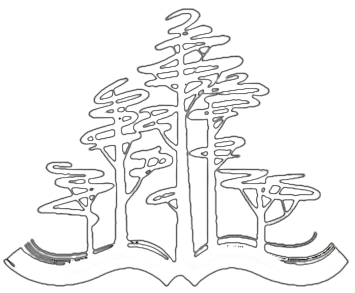Summer School on the Russian Literature. 2017.
Vol. 13. № 1
The article clarifies the history of the circle of „Argonauts“ which played an important role in the development of Russian symbolism. On the material of archival sources the idea of the collection „Vox coelestis“, conceived but never realized by Ellis, is reconstructed.
Keywords: Russian symbolism, Ellis, А. А. Blok, N. P. Kiselyov, „Argonauts“.
Keywords: Russian symbolism, Ellis, А. А. Blok, N. P. Kiselyov, „Argonauts“.
Elena Glukhovskaya
On the history of Russian „Argonautism“:
Collection „Vox coelestis“
Collection „Vox coelestis“
The essay focuses on a sample of the new genre of contemporary Russian online quasi-folklore „poroshok“ („powder“); the related genre of „pirozhok“ („pie-let“) is also considered. The structure of these mini masterpieces of light verse is analysed in terms of the literary-theoretical concepts of defamiliarization, naturalization, ungrammaticality and epiphany.
Key words: (the genres of) „pirozhok“ and „poroshok“, poetic structure, translation, metalinguistic, metapoetic, ungrammaticality, defamiliarization, naturalization.
Key words: (the genres of) „pirozhok“ and „poroshok“, poetic structure, translation, metalinguistic, metapoetic, ungrammaticality, defamiliarization, naturalization.
Alexander Zholkovsky
„AGU!“
Notes on „pirozhok“ („pie-let“) and „poroshok“ („powder“)
Notes on „pirozhok“ („pie-let“) and „poroshok“ („powder“)
The article explains an appearance of a hidden quotation from the 14th chapter of Isaiah the Prophet’s Book in the poetic chapter of anti-Lutheran (and anti-Danish) Ivan Nasedka’s treatise. The most indicative cases of reference of this Biblical fragment in Symeon of Polotsk and Avvakum’s writings are given. The attraction of the Danish material, such as sermons of Anders Arrebo, Nasedka’s contemporary, allows to educe and describe the way of assimilation of judged character to Satan from the stated Isaiah the Prophet’s Book that was revealed only in Paisi Ligarid „Disproof of Nikita the Pope“ translated from Latin and was absent in original russian writings.
Keywords: Russian literature of the XVII century, Danish literature of the XVII century, Ivan Nasedka, Anders Arrebo.
Keywords: Russian literature of the XVII century, Danish literature of the XVII century, Ivan Nasedka, Anders Arrebo.
Mikhail Ljustrov
„The Evil Warrior“, who sat on the „Northern Mountains“:
Chapter 14 of the Book of the Prophet Isaiah in the writings of Ivan Nasedka and Anders Arrebo
Chapter 14 of the Book of the Prophet Isaiah in the writings of Ivan Nasedka and Anders Arrebo
This article discusses the role of the epistles, which were included in the first poetry collection of E. Baratynskij. The comparison of all known versions of the epistles shows that some of them were purposely modified before being printed in the Baratyskij’s book. These changes could be interpreted in terms of genre mutations alongside with Baratynskij’s individual views on the composition of this poetry collection. The latter is reconstructed in the context of similarly structured poetry books of 1820s.
Keywords: E. A. Baratynskij, A. S. Pushkin, K. N. Batushkov, textual criticism, 19th century poetry, poetry collections.
Keywords: E. A. Baratynskij, A. S. Pushkin, K. N. Batushkov, textual criticism, 19th century poetry, poetry collections.
Antonina Martynenko
Genre traditions and author's pragmatics:
The section „Messages“ in the structure of the collection of E. A. Baratynskij in 1827
The section „Messages“ in the structure of the collection of E. A. Baratynskij in 1827
This article is devoted to the problem of interaction between high and mass, comic (satirical) cultures of the last turn of the centuries considered through the examples from the works of Vladimir Mayakovsky and some other authors.
Keywords: Russian decadents, parody, rime, puns, „historical poetics“.
Keywords: Russian decadents, parody, rime, puns, „historical poetics“.
Gennady Obatnin
From observations in the field of sociopoetics
This article makes an attempt to consider „The 6th Thrust“of Mikhail Kuzmin’s famous cycle „The Trout Breaks the Ice“ (1927) against the background of English balladic tradition: folklore songs and broadsides; the poetry of English Romanticism; German „Lenore“ topos, which in its turn influenced Russian Sentimentalists and (Pre) Romantics; the Russian Anglicized ballad of the Modernist epoch; and, last but not least, Russian translations of English and American ballad classics. In „The 6th Thrust“, Kuzmin ignores the main balladic trends of the 1920s. His piece is an anachronistic version of the English Romantic ballad, while his contemporaries modernized the balladic genres, in particular, by singing war and economic victories of the Soviet state. Yet another difference is that „The 6th Thrust“ is perfectly well written while Kuzmin’s contemporaries paid little attention to style and special requirements of the genre. „The 6th Thrust“’s only rival was Vladislav Khodasevich’s „John Bottom“ — mainly due to its British repertoire and sophisticated treatment of „Lenore“ topos. Appended to the article is a list of ballads (in the broad sense of this term) written between 1890 and 1939 (more than 150 titles).
Keywords: English ballad, Romantic ballad, ballads in Russian Modernism, stylization, „The Trout Breaks the Ice“ by M. Kuzmin, „John Bottom» by V. Khodasevich, Russian Modernist translations of English-language ballads.
Keywords: English ballad, Romantic ballad, ballads in Russian Modernism, stylization, „The Trout Breaks the Ice“ by M. Kuzmin, „John Bottom» by V. Khodasevich, Russian Modernist translations of English-language ballads.
Lada Panova
„The 6th Thrust“ of Mikhail Kuzmin’s cycle „The Trout Breaks the Ice“ against the background of English balladic tradition
The aim of this article is to create the note of realities to Yurii Trifonov’s novel the „The Exchange“. For the purpose it is necessary to tackle such issues as who is the recipient of the novel and what its sources are.
Keywords: Yu. Trifonov, note, realities, recipient, sources, „The Exchange“, novel.
Keywords: Yu. Trifonov, note, realities, recipient, sources, „The Exchange“, novel.
Sergeii Shershnev
The problem of a real commentary on Yurii Trifonov's novel „The Exchange“
Contacts
summerschool@list.ru
В оформлении сайта использованы материалы Freepik.


